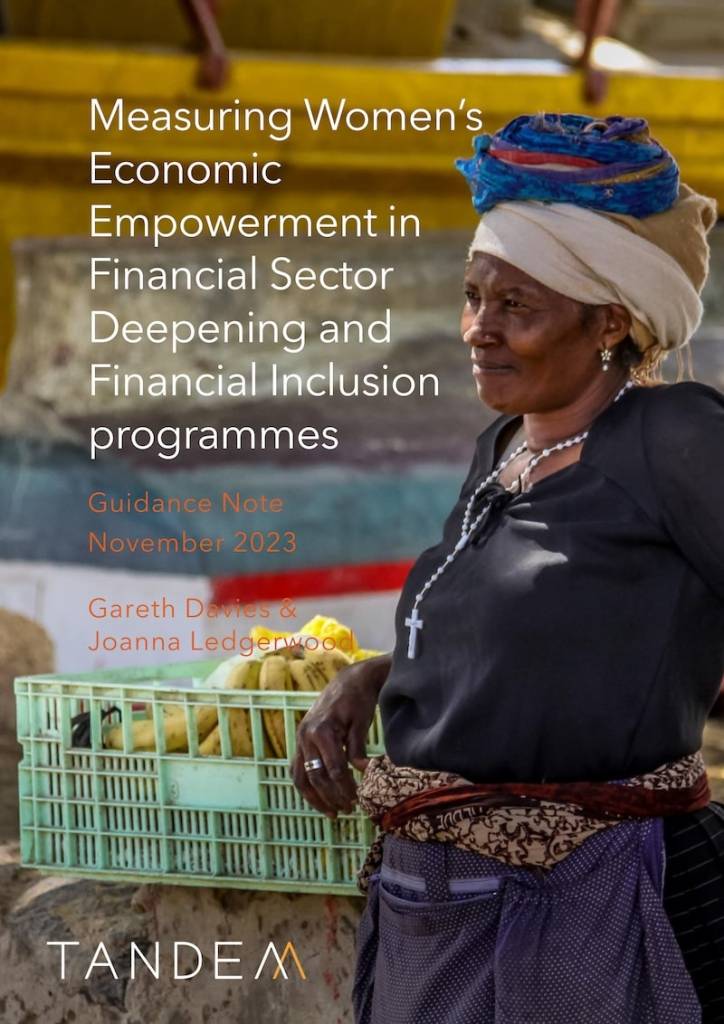Overview
For many programmes working in Financial Sector Deepening (FSD) or financial inclusion programmes, women and Women’s Economic Empowerment (WEE) are increasingly at the centre of programme strategies and Theories of Change. This makes it imperative that programmes are able to report credible and robust results on WEE, and that monitoring and evaluation systems generate timely and useful data and insights that can be used by staff to continuously improve the WEE impacts achieved. Better gender data, including on WEE, can also be effective in highlighting gender gaps and driving programme and partner commitment to delivering results for women and girls.
The measurement of WEE is widely acknowledged to be complex and challenging. Conceptually, WEE can be defined in different ways, and what counts as ‘empowerment’ can vary across contexts, regions, and individuals. Robustly measuring subjective elements of empowerment can be tricky, with direct survey questions often subject to reporting bias. Features of the data collection process itself – such as the gender of the enumerator or the time and place of the interview or survey – can also introduce measurement bias if not considered carefully.1
Given these complexities, this Guidance Note presents a framework and methodology for measuring the WEE outcomes of FSD projects and interventions. The Note can be used for both monitoring and evaluation purposes. The Note also provides useful guidance for undertaking research exploring concepts relating to empowerment (or any research where collecting the perspectives and experiences of women as well as men is important).
The rest of the Note is organised as follows:
- Section 2 presents a simple framework for conceptualising WEE. Key concepts in empowerment such as ‘access’ and ‘agency’ are introduced and defined, with illustrative examples from FSD programming. This section provides the conceptual foundation for the remainder of the Note.
- Section 3 presents a five-step methodology for measuring WEE. For any given project or intervention, the first step is to map the empowerment pathway. In the second step, indicators are defined for each element of the empowerment pathway. The third step involves developing a measurement plan which sets out the data collection methods, sources, samples, timing, and responsibilities for each indicator. The fourth step covers the actual data collection process, including the design of data collection instruments, pre-testing, enumerator recruitment, and so on. In the final step, data is analysed and synthesised and used to both report progress and results to donors and other stakeholders and to inform programme decision-making.
- Section 4 provides a list of external resources. Examples of survey questions and tools for measuring WEE are also included in the Annex.



